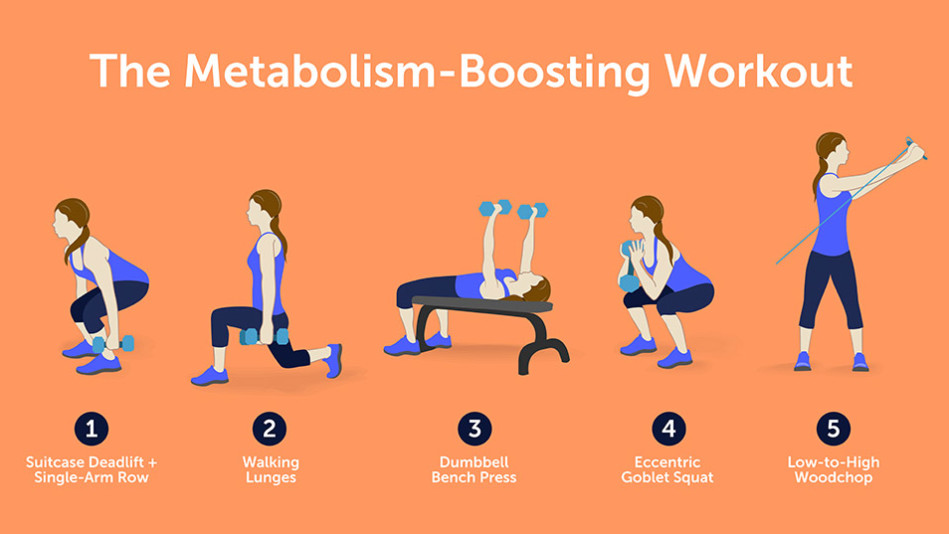How To Bulk With High Metabolism

For individuals blessed (or cursed, depending on your goals) with a high metabolism, the quest to gain muscle mass, often referred to as "bulking," can feel like an uphill battle. Consuming enough calories to consistently surpass your body's energy expenditure requires a strategic approach, one that goes beyond simply eating more.
This article delves into the science-backed strategies for individuals with high metabolisms to effectively bulk and build muscle. We'll explore the necessary dietary adjustments, training protocols, and lifestyle considerations needed to achieve a positive energy balance and stimulate muscle growth, despite a naturally rapid metabolic rate.
Understanding High Metabolism and Bulking
A high metabolism means your body burns calories at a faster rate than average. This can be due to various factors, including genetics, age, body composition (more muscle mass increases metabolic rate), and activity level.
The fundamental principle of bulking is creating a calorie surplus – consuming more calories than you expend. For those with high metabolisms, this surplus needs to be significantly larger and consistently maintained to override the body's natural tendency to burn through calories.
Dietary Strategies: Fueling the Fire
The cornerstone of any successful bulking program, especially for individuals with high metabolisms, is a well-structured and consistently followed diet. This isn't about recklessly consuming junk food; it's about strategically fueling your body for muscle growth.
Calculating Calorie Needs: The First Step
Begin by calculating your basal metabolic rate (BMR) – the number of calories your body burns at rest. Online calculators and formulas like the Harris-Benedict equation can provide a starting point, though they are estimates.
Next, factor in your activity level using multipliers to determine your Total Daily Energy Expenditure (TDEE). To bulk, aim to consume 300-500 calories *above* your TDEE, this is a surplus which promotes muscle growth.
Macronutrient Breakdown: Protein, Carbs, and Fats
Protein is crucial for muscle repair and growth. Aim for 1.6-2.2 grams of protein per kilogram of body weight per day. Prioritize high-quality protein sources like lean meats, poultry, fish, eggs, and dairy.
Carbohydrates are your body's primary energy source, essential for fueling workouts and replenishing glycogen stores. Choose complex carbohydrates like whole grains, brown rice, quinoa, and sweet potatoes for sustained energy release.
Fats are important for hormone production and overall health. Incorporate healthy fats from sources like avocados, nuts, seeds, olive oil, and fatty fish.
Meal Frequency and Timing: Consistent Fueling
Instead of relying on a few large meals, aim for smaller, more frequent meals throughout the day. This helps maintain a steady supply of nutrients and prevents your metabolism from dipping too low.
Consider consuming a protein and carbohydrate-rich meal or shake before and after your workouts to optimize muscle recovery and growth. Consuming a casein protein shake before bed can further provide a slow release of amino acids during sleep.
Strategic Food Choices: Calorie Density Matters
Focus on calorie-dense foods that provide a lot of energy in a relatively small volume. Examples include nuts, seeds, nut butters, dried fruits, avocados, and olive oil. These can help you reach your calorie goals without feeling overly full.
Liquid calories, such as protein shakes, smoothies, and juices, can also be a convenient way to increase your calorie intake. However, prioritize whole foods whenever possible.
Training for Muscle Growth: Stimulating Anabolism
Diet alone won't build muscle. A well-designed resistance training program is essential to stimulate muscle protein synthesis.
Compound Exercises: Maximizing Muscle Activation
Focus on compound exercises that work multiple muscle groups simultaneously. These include squats, deadlifts, bench presses, overhead presses, and rows. They are the most effective for building overall strength and muscle mass.
Aim for a rep range of 6-12 reps per set, using a weight that challenges you but allows you to maintain good form. Progressive overload is key – gradually increasing the weight, reps, or sets over time to continue challenging your muscles.
Training Frequency and Volume: Finding the Right Balance
Train each muscle group 2-3 times per week to optimize muscle protein synthesis. Ensure adequate rest and recovery between workouts to allow your muscles to repair and rebuild.
Overtraining can hinder your progress, especially when bulking and working with a high metabolism. Listen to your body and adjust your training volume and intensity as needed.
Importance of Rest and Recovery: Let Your Muscles Rebuild
Sleep is critical for muscle recovery and growth. Aim for 7-9 hours of quality sleep per night. Your body releases growth hormone during sleep, which aids in muscle repair and regeneration.
Manage stress levels through relaxation techniques like meditation, yoga, or spending time in nature. Chronic stress can elevate cortisol levels, which can hinder muscle growth and promote fat storage.
Addressing Specific Challenges for High Metabolism Individuals
People with high metabolisms often struggle with appetite. Stimulating appetite can be accomplished with smaller, more frequent meals and liquid calories.
Some individuals may also consider supplements, like creatine, to support muscle growth and performance. However, consult with a healthcare professional or registered dietitian before taking any supplements.
"Consistency is absolutely key. A 'perfect' diet followed sporadically won't yield the same results as a consistently good diet," emphasizes Dr. Emily Carter, a sports nutritionist at the National Institute of Health.
Long-Term Sustainability and Monitoring Progress
Bulking is not meant to be a permanent state. After a period of bulking, typically lasting several months, it's important to transition to a maintenance phase or a cutting phase to optimize body composition.
Track your progress by monitoring your weight, body composition (muscle mass and body fat percentage), and strength gains. Adjust your diet and training program as needed based on your results.
Be patient and persistent. Building muscle takes time and effort, especially for individuals with high metabolisms. Consistency, dedication, and a strategic approach are the keys to success.

















